Structure of the γ-tubulin ring complex-capped microtubule
- PMID: 38609661
- PMCID: PMC11257807
- DOI: 10.1038/s41594-024-01264-z
Structure of the γ-tubulin ring complex-capped microtubule
Abstract
Microtubules are composed of α-tubulin and β-tubulin dimers positioned head-to-tail to form protofilaments that associate laterally in varying numbers. It is not known how cellular microtubules assemble with the canonical 13-protofilament architecture, resulting in micrometer-scale α/β-tubulin tracks for intracellular transport that align with, rather than spiral along, the long axis of the filament. We report that the human ~2.3 MDa γ-tubulin ring complex (γ-TuRC), an essential regulator of microtubule formation that contains 14 γ-tubulins, selectively nucleates 13-protofilament microtubules. Cryogenic electron microscopy reconstructions of γ-TuRC-capped microtubule minus ends reveal the extensive intra-domain and inter-domain motions of γ-TuRC subunits that accommodate luminal bridge components and establish lateral and longitudinal interactions between γ-tubulins and α-tubulins. Our structures suggest that γ-TuRC, an inefficient nucleation template owing to its splayed conformation, can transform into a compacted cap at the microtubule minus end and set the lattice architecture of cellular microtubules.
© 2024. The Author(s), under exclusive licence to Springer Nature America, Inc.
Conflict of interest statement
Competing Interests
T.M.K is a co-founder of and has an ownership interest on RADD Pharmaceuticals, Inc.
Figures
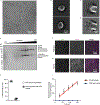


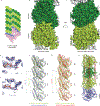
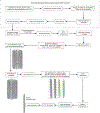

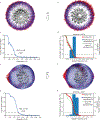
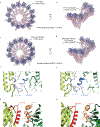
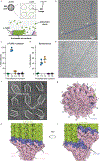
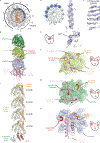
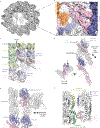
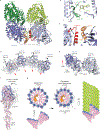
Update of
-
Structure of the γ-tubulin ring complex-capped microtubule.bioRxiv [Preprint]. 2023 Nov 20:2023.11.20.567916. doi: 10.1101/2023.11.20.567916. bioRxiv. 2023. Update in: Nat Struct Mol Biol. 2024 Jul;31(7):1124-1133. doi: 10.1038/s41594-024-01264-z. PMID: 38045257 Free PMC article. Updated. Preprint.
References
-
- Kirschner M & Mitchison T Beyond self-assembly: from microtubules to morphogenesis. Cell 45, 329–342 (1986). - PubMed
-
- Akhmanova A & Steinmetz MO Control of microtubule organization and dynamics: two ends in the limelight. Nat. Rev. Mol. Cell Biol. 16, 711–726 (2015). - PubMed
-
- Böhm KJ, Vater W, Fenske H & Unger E Effect of microtubule-associated proteins on the protofilament number of microtubules assembled in vitro. Biochim. Biophys. Acta 800, 119–126 (1984). - PubMed
MeSH terms
Substances
Grants and funding
LinkOut - more resources
Full Text Sources
Miscellaneous

